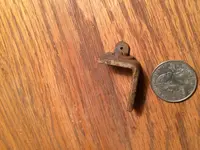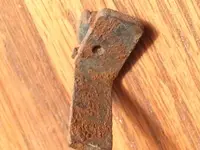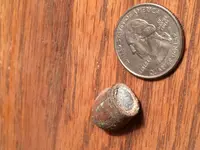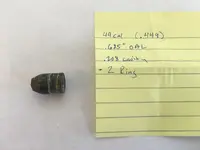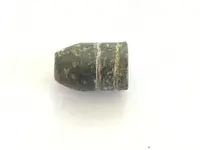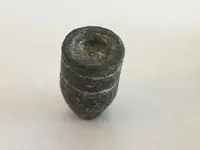You are using an out of date browser. It may not display this or other websites correctly.
You should upgrade or use an alternative browser.
You should upgrade or use an alternative browser.
Need help identifying
- Thread starter Texn
- Start date
d2
Bronze Member
Bullet appears to be a .45 bullet, modern because of the copper on it. The other piece does look like the peep of a peep sight but I don't think thats what it is...d2
Davers
Gold Member
- Joined
- Jan 8, 2013
- Messages
- 8,217
- Reaction score
- 7,277
- Golden Thread
- 0
- Location
- N.of , I-285...GA
- Detector(s) used
- Whites Spc xlt & Tesoro Tejon- Now back ...Fisher 1266-X. TRX Pointer. New .Teknetics G2 + . New AT Pro .
- Primary Interest:
- All Treasure Hunting
Bullet appears to be a .45 bullet, modern because of the copper on it. The other piece does look like the peep of a peep sight but I don't think thats what it is...d2
I must agree with d2, ...It does have that 'peep sight' look.
Id keep hunting that area & dig most everything.
GL
And Welcome to the T-Net/ Civil War site.
Texn
Greenie
- Joined
- Jun 3, 2017
- Messages
- 12
- Reaction score
- 2
- Golden Thread
- 0
- Primary Interest:
- All Treasure Hunting
- #4
Thread Owner
I am in need of some advice for searching for these civil war relics. I hope this thread is in the right place. I am definitely a novice at this.
I am using a bounty hunter metal detector with the all metal mode since its has the deepest detection. Most of the battle site is on private property that my family owns. From the research I have done, the property fence line appears to be very close to the actual site. The result of this is detecting a lot of ancient fence wire buried several inches. Last weekend, I think I dug up 30 different pieces of wire. I know the battle site is close by, but havent pin pointed it yet. Surely with the hundreds of rounds fired, I would come across them??
The detector has the capability of canceling out certain types of metals like iron, but this would result in me not finding most relics. I am not sure how to proceed here, except for continuing digging until i find something.
There has been a couple books written on the battle and some descriptions of the attack. I will post a link below. I guess I am just hoping for some revelation that has slipped my mind. haha.
https://texashistory.unt.edu/ark:/67531/metapth2409/m1/1/
I am using a bounty hunter metal detector with the all metal mode since its has the deepest detection. Most of the battle site is on private property that my family owns. From the research I have done, the property fence line appears to be very close to the actual site. The result of this is detecting a lot of ancient fence wire buried several inches. Last weekend, I think I dug up 30 different pieces of wire. I know the battle site is close by, but havent pin pointed it yet. Surely with the hundreds of rounds fired, I would come across them??
The detector has the capability of canceling out certain types of metals like iron, but this would result in me not finding most relics. I am not sure how to proceed here, except for continuing digging until i find something.
There has been a couple books written on the battle and some descriptions of the attack. I will post a link below. I guess I am just hoping for some revelation that has slipped my mind. haha.
https://texashistory.unt.edu/ark:/67531/metapth2409/m1/1/
lockster99
Hero Member
Dig everything. So many different possible items could be there....dig everything.
If it's in your budget, look into investing into a little more expensive detector. The extra few inches of depth that a better detector can give you will make a world of difference. Good luck.
If it's in your budget, look into investing into a little more expensive detector. The extra few inches of depth that a better detector can give you will make a world of difference. Good luck.
Texn
Greenie
- Joined
- Jun 3, 2017
- Messages
- 12
- Reaction score
- 2
- Golden Thread
- 0
- Primary Interest:
- All Treasure Hunting
- #6
Thread Owner
Dig everything. So many different possible items could be there....dig everything.
If it's in your budget, look into investing into a little more expensive detector. The extra few inches of depth that a better detector can give you will make a world of difference. Good luck.
The detector normally hits on things 8 inches or so down. How much deeper would a better detector go? Do you have a middle of the road detector that you would recommend?
d2
Bronze Member
I would tune it so that the fence wire was cancelled out. The mini ball's, button's and such shouldn't be very deep unless the battle field has been farmed and even then it shouldn't be too deep. Tune out some of the junk so you can dig bullets and such before you lose interest in it. I find bullets here and buttons and most are no more than 4 inches deep. You'll find it if you keep looking...d2
lockster99
Hero Member
Texn.....if it's in the budget, an AT Pro is hard to beat as an all purpose detector. The price has been dropping lately too. If not, look into the Ace line by Garrett.
sawmill man
Hero Member
You do have a rifle peep sight ,those are a common style on the kids style 22 cricket single shot .
sawmill man
Hero Member
It had a dove tail slot down the side and a small screw off set to the side to clamp down ,easy to come loose.I googled cricket peep sites and it do look like one. How was it attached to the side of the receiver? ...d2
Davers
Gold Member
- Joined
- Jan 8, 2013
- Messages
- 8,217
- Reaction score
- 7,277
- Golden Thread
- 0
- Location
- N.of , I-285...GA
- Detector(s) used
- Whites Spc xlt & Tesoro Tejon- Now back ...Fisher 1266-X. TRX Pointer. New .Teknetics G2 + . New AT Pro .
- Primary Interest:
- All Treasure Hunting
I would tune it so that the fence wire was cancelled out. The mini ball's, button's and such shouldn't be very deep unless the battle field has been farmed and even then it shouldn't be too deep. Tune out some of the junk so you can dig bullets and such before you lose interest in it. I find bullets here and buttons and most are no more than 4 inches deep. You'll find it if you keep looking...d2
Yep 4-6 inches avg , on minnies in undisturbed soil , half my buttons were found on top of the ground or just under the surface. (in wood's hunting mostly). As d2 Stated Farmed areas are Different.
Sounds like yr searching in the wrong area & it's already been "hunted the heck out of" still in such areas I find small caliber Round balls , Percussion caps , small stuff.
If you are digging 22 bullets & their long or short cases , u should 'imo' be getting something.
I'd keep at it , think outside the box & Scout nearby areas that you would usually avoid.
Getting the iron out is good but i'd only hunt like that (all metal) for a short time , 'especially this time of year ' then discriminate out the Iron for most of the hunt.
GL
Texn
Greenie
- Joined
- Jun 3, 2017
- Messages
- 12
- Reaction score
- 2
- Golden Thread
- 0
- Primary Interest:
- All Treasure Hunting
- #14
Thread Owner
Can you explain a little further about tuning out the iron? From what I can tell about my bounty hunter detector, I can tune out "iron" using discovery mode. But wouldnt this not allow me to find bullets, or anything else made out of iron?
d2
Bronze Member
Bullets are made of lead and buttons are brass/copper. Take your detector and place a piece of the fence wire on the ground and go over it several times and adjust your discrimination to either cancel it out or you realize what the signal sounds like. After you get that done run it over a lead bullet or piece of lead and see what that sounds like and get busy. It will probably still hit on big iron so artillery and such will still make a great noise on your machine...d2
Texn
Greenie
- Joined
- Jun 3, 2017
- Messages
- 12
- Reaction score
- 2
- Golden Thread
- 0
- Primary Interest:
- All Treasure Hunting
- #16
Thread Owner
Bullets are made of lead and buttons are brass/copper. Take your detector and place a piece of the fence wire on the ground and go over it several times and adjust your discrimination to either cancel it out or you realize what the signal sounds like. After you get that done run it over a lead bullet or piece of lead and see what that sounds like and get busy. It will probably still hit on big iron so artillery and such will still make a great noise on your machine...d2
Hey D2, Sorry for the delayed response. I have recently done more research into books that cover the battle site and I think I was in the wrong area. The area I need to search is grown up with cedar trees and brush and it is almost impossible to even walk through, so I recently took a bulldozer to the brush and cleared a 10 acre search area. It disturbed the soil doing so, but it was either that or attempt to cut each tree by hand. If you saw the area you quickly realize that wasnt an option. So the area is now cleared with distrubed soil.
I apologize for all the questions, but there is so much I dont know about this hobby and my googling skills have let me down.

Like stated before in my prior post, I am using a Bounty Hunter Pioneer 505. All of my past searches have been in "all metal" mode without discriminating anything. I went out last weekend and just spent a couple hours walking in a straight line in the cleared area. I track myself with a gps app so I can see exactly where ive been and where i havent. I plan on doing a grid pattern search in the cleared area before i move on. In two hours, I found probably 15 fence staples and untold amounts of wire. Most of the fence wire was close to the surface with some fence staples being perhaps 5 inches down. I did find something that might be from the battle. I plan on posting it soon on this thread to perhaps get an ID on it if it was.
I have not yet used the discrimination mode like you suggested above to cancel out wire. Would you suggest I also discriminate out the fence staples? I am just worried that other battle site relics might also be ruled out by discriminating out fence wire and fence staples. What is your opinion on this matter? There was not any artillery used in the battle. The battle involved 120 confederate soldiers on foot against 90 pro union German-Texan militia who were defecting to the north and planned on joining the union army.
In your opinion, is the pioneer 505 up to par for searching battle field relics? I am not interested in coins etc. I mainly want a detector that will search for civil war relics and exploring caves.
The way my model operates, I first turn it on and turn the sensitivity knob up all the way with the discrimination knob all the way down. By default, mine does not start up in all metal mode. I have to press the all metal button to enter it after turning it on. I then hold the coil above the ground and press the ground track button. I periodically push the ground track button while im searching to adjust it.
My last question is what makes me think i might need a detector that can search greater depths. The terrain of the battle site area is very rocky with uneven ground. This makes sweeping the coils close to the ground impossible and hard on the coils with all the bumps and knocks it takes from the rocks. The only way to effectively sweep the ground is by holding the coils farther above the uneven ground. However, i have tested out the sweeping height of certain located items and when the coils are held higher above the ground, the items are sometimes not located.
In your opinion, is the pioneer 505 up to par for searching battle field relics? I am not interested in coins etc. I mainly want a detector that will search for civil war relics and exploring caves.
DCMatt
Gold Member
- Joined
- Oct 12, 2006
- Messages
- 10,472
- Reaction score
- 13,785
- Golden Thread
- 0
- Location
- Herndon Virginia
- Detector(s) used
- Minelab Equinox 600, EX II, & Musketeer, White's Classic
- Primary Interest:
- Metal Detecting
Found these items near a civil war battle site. Not entirely sure if they are from the battle or not. The piece of iron almost appears to be a rifle sight of some sort but the right angle throws me off.
View attachment 1458106
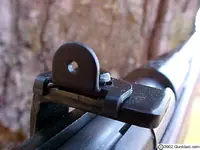
Not Civil War.
Texn
Greenie
- Joined
- Jun 3, 2017
- Messages
- 12
- Reaction score
- 2
- Golden Thread
- 0
- Primary Interest:
- All Treasure Hunting
- #19
Thread Owner
Attached are a few bullets I have located. There are 3 bullets. The intact one has a flat impact area on the front of the bullet. The others are flattened pieces of lead. All were found at the base of a cliff. I assume the flattened bullets impacted the cliff wall. I am not sure how to date them. The civil war bullets I have seen look somewhat different, but I am unsure where to categorize it at. Any thoughts would be appreciated.
Attachments
Texn
Greenie
- Joined
- Jun 3, 2017
- Messages
- 12
- Reaction score
- 2
- Golden Thread
- 0
- Primary Interest:
- All Treasure Hunting
- #20
Thread Owner
New finds
I have finally narrowed down some of the area that the battle took place and found several items. Some of them are still a mystery to me and thought yall might have some suggestions on what they are.
Below are what I believe are .52 caliber Sharps Carbine - possible Richmond Labs. The weights are a tiny bit off as well as the length, but the tips of the bullets are a little flattened it appears. I assume the bullets would be be much flatter if actually fired, but it does appear the tips have some damage to them. I assume they are drops.
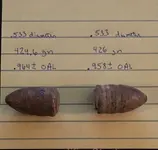
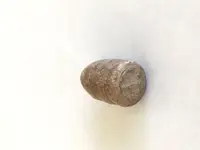
close to the bullets above I found this pocket knife. Not much information to go with on it except its old.
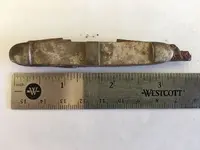
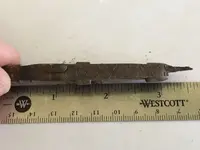
A little ways away I found this broken piece. Its heavy and thick. Not sure about this.
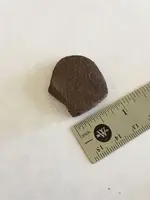
Same story here. Not sure.
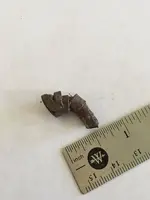
This piece looks as though it could be part of a weapon, but I dont see where it would fit in.
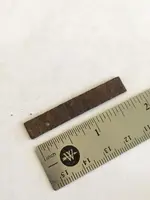
This looks as though it could be part of a curry comb for horses or perhaps part of suspender adjustment tab. Not sure.
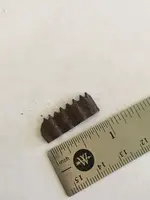
This part is definitely a tool for either weapons or something. Its basically a slot screwdriver large and small hand tool. The ends are exactly the same as a screw driver.
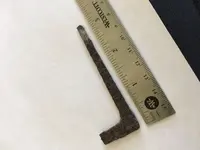
This is a buckle obviously, but I am not sure to what.
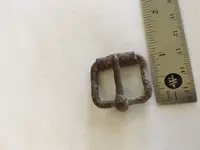
In another location of the battlefield area I found 12 different musket balls that appear to be .45 and .60 caliber. I located all of them within a 4 ft area. Someone dropped their ammo or was killed there I assume. The balls are not perfectly round by any means but dont appear to be fired either. In the same small area I found several priming caps. Some appear to be used while others looked new..or unused anyway.
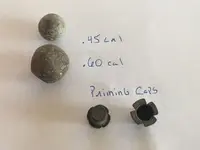
So far that is it, but I am starting to put together the two wings of the battle and will hopefully narrow it down further. It is so hot down here in Texas, searching for them is brutal. Any suggestions or remarks would be appreciated.
I have finally narrowed down some of the area that the battle took place and found several items. Some of them are still a mystery to me and thought yall might have some suggestions on what they are.
Below are what I believe are .52 caliber Sharps Carbine - possible Richmond Labs. The weights are a tiny bit off as well as the length, but the tips of the bullets are a little flattened it appears. I assume the bullets would be be much flatter if actually fired, but it does appear the tips have some damage to them. I assume they are drops.


close to the bullets above I found this pocket knife. Not much information to go with on it except its old.


A little ways away I found this broken piece. Its heavy and thick. Not sure about this.

Same story here. Not sure.

This piece looks as though it could be part of a weapon, but I dont see where it would fit in.

This looks as though it could be part of a curry comb for horses or perhaps part of suspender adjustment tab. Not sure.

This part is definitely a tool for either weapons or something. Its basically a slot screwdriver large and small hand tool. The ends are exactly the same as a screw driver.

This is a buckle obviously, but I am not sure to what.

In another location of the battlefield area I found 12 different musket balls that appear to be .45 and .60 caliber. I located all of them within a 4 ft area. Someone dropped their ammo or was killed there I assume. The balls are not perfectly round by any means but dont appear to be fired either. In the same small area I found several priming caps. Some appear to be used while others looked new..or unused anyway.

So far that is it, but I am starting to put together the two wings of the battle and will hopefully narrow it down further. It is so hot down here in Texas, searching for them is brutal. Any suggestions or remarks would be appreciated.
Similar threads
- Replies
- 18
- Views
- 1K
Users who are viewing this thread
Total: 1 (members: 0, guests: 1)


